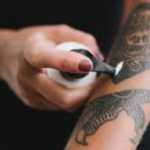Diabetes is an insidious health issue that affects thousands of Australians every year. Much of the blame has been placed on our so-called Western diet – an eating regime that is rich in sugars, fats, and processed food. Combine this diet with an overworked culture that tends to place too little emphasis on the importance of regular exercise, and the problem of late-onset diabetes becomes one of national importance. It is an issue that places an enormous strain on our health services every year.
The Problem with Diabetes
Type 2 Diabetes – typically the disease associated with a poor diet and lack of exercise – can certainly be managed through regular blood testing, exercise, and a careful diet, but it can also lead to the following chronic and acute health problems if left unchecked:
• Organ damage: If you suffer from diabetes, your blood sugar needs to be controlled. If levels rise too high, it can cause a range of health problems, including organ damage.
• Neuropathy: Many long-term diabetes patients will at some stage begin to suffer nerve damage, particularly in extremities like the hands and feet. This leads to what is called neuropathy, which is the loss of feeling in these areas.
• Circulation: High blood sugar levels damage the delicate blood vessels in our bodies. This means that the circulation to extremities like hands and feet are affected, as well as other parts of the body.
When someone with diabetes suffers neuropathy and poor circulation, this can lead to wounds that don’t heal quickly and become infected. Because the diabetic has neuropathy, they are unable to feel the pain associated with wounds, cuts, and sores. If left untreated, these wounds can become badly infected, and in the worst cases, those extremities may need to be amputated.
Looking After Feet as a Diabetic
Clearly, it is vitally important to maintain good foot health if you are a diabetic. There are a number of things that can be done to do so, such as the following methods:
• Custom Insoles: By investing in a pair of specially designed insoles for diabetes, you help to protect feet, cut down the risk of infection, and promote better healing. Soft orthotics like this generally include an anti-bacterial top layer and are gentle and soft.
• Checking: Ensure that you check your feet every day for cuts, bruises, or other wounds that may require further treatment. Keep an eye on them each day to check on their healing progress.
• Washing: By maintaining good foot cleanliness, you minimize the risks of infection due to bacterial buildup on the skin and bacteria entering cuts due to dirty feet.
• Toenails: It is wise to keep toenails neat and trimmed down so as not to encourage ingrown nails that can potentially damage and cut the skin.
• Protection: By wearing shoes and socks as much as possible, you minimize the risk of foot injuries and keep your feet relatively clean.
Though diabetes is a chronic disease that requires good management and a change in lifestyle, it need not make a major impact on the health of the feet and other parts of the body. Through careful management, medical check-ups, and the help of custom-designed orthotics, one may still lead an enjoyable, active, and productive life.
![]()









